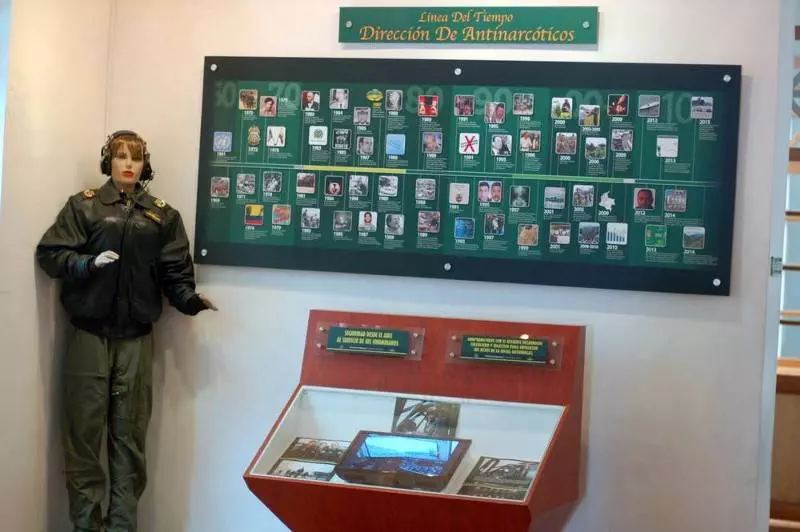
One of several mainstream but fascinating attractions around Bogota, the Bogota Police Museum (Palacio Museo Histórico de la Policía Nacional) offers up a look at Pablo Escobar’s last hours and a number of other ongoing law enforcement efforts.
Although no reservations are required, you will need a tour guide. If yours is anything like ours, you may get a very young gentlemen with good English skills when you walk in.

The building was constructed from 1923–26, and was the 2nd most important police station in the country until 1985. That’s the year in which it became a museum, and the basement still has jail cells and bars.

An exhibition of horse saddles acknowledging the country’s more rugged terrain, and how horses are often the only ways to patrol some of the land.

An old-school switchboard, anyone? Like a number of other museums around the world, plenty of outmoded and obsolete technology never leaves the building, just gets moved to the ‘museum’ side of things.

Supposedly the first Harley-Davidson in Colombia, it’s modified with emblems in silver and gold. You’ll need to listen carefully to the description, since there’s no sign of what’s going on.

Called an escopetarra, or a shotgun guitar, the artist Cesar Lopez makes guitars which were made from shotguns. They helped to promote peace via 7,000 of these creations.

The museum turns from peace back to the goals of any police force: protect, serve, take out bad guys. The signage is almost entirely in Spanish, so feel free to ask your tour guide to elaborate. One highlight is Operaction Farrapos, in which a fugitive had 6 plastic surgeries and burned fingerprints to avoid being identified. He was eventually apprehended and identified by his tattoo.

This room holds some of the reasons Pablo Escobar was able to avoid capture for so long. Look for a large poster highlighting Escobar’s location, a contradora de dinero (money counter) on a desk with a clever secret compartment, and a little pistol from Italy that Escobar called his 2nd wife (lower right corner):

Despite it being some decades some Escobar’s death, his story still seems almost too new to tell. That legacy left a lot of police officers dead, to put it mildly, and despite the destruction the drug trade brought, there are still some that appreciated what he did for the people of Medellin.
Give yourself 1 to 1 1/2 hours to take the museum in. Once done, you’re nicely located in the heart of Bogota, and can easily walk to plenty of other places — including some interesting shops offering police or military uniforms…
Name: Bogota Police Museum (Palacio Museo Histórico de la Policía Nacional)
Address: Calle 9, Carrera 9, Bogota, Colombia (GPS: 4.597701, -74.078412)
Directions: You’re basically across the street and down a side street from the Centro Comerical Gran Sen. Bus 59A, 252, and C27 all stop along Carrera 10 close to Calle 9. Backtrack to calle 9, then walk away from the Centro Comercial / park. The museum is about 100 meters from the main road on the right.
Hours: 8:00am-5:00pm, open everyday but Monday.
Admission: free
Phone: +57 1 2430840
Website: http://www.policia.gov.co/portal/page/portal/MUSEO/Home_Museo


